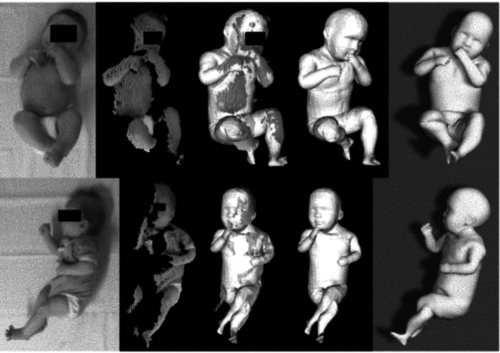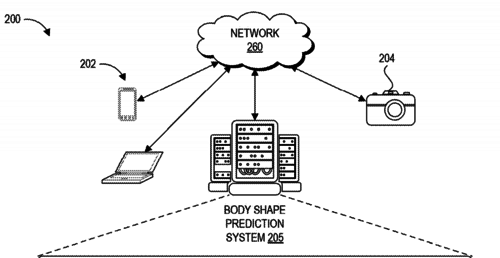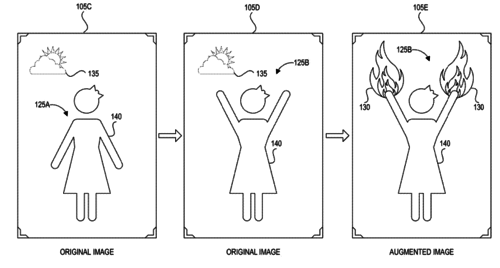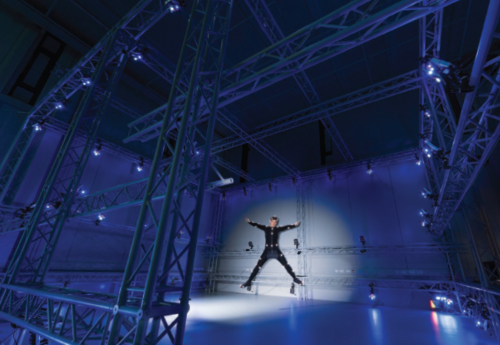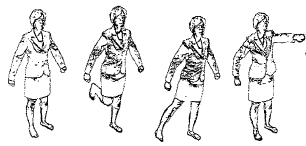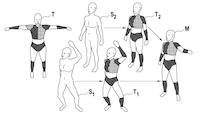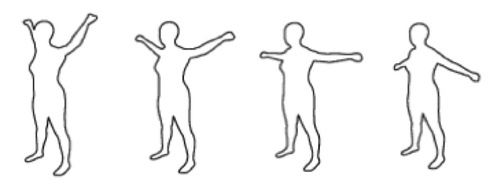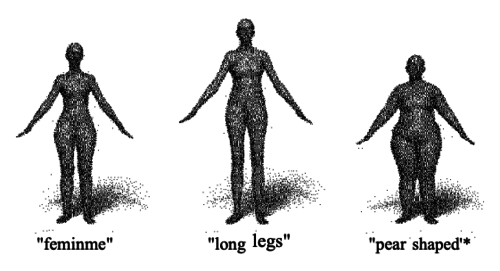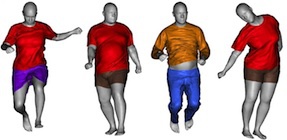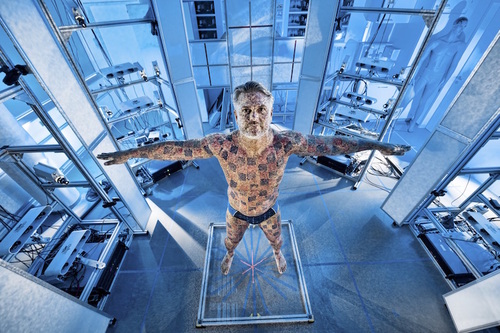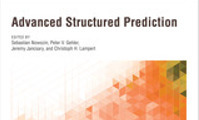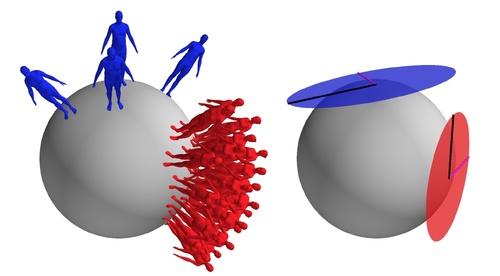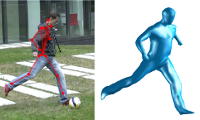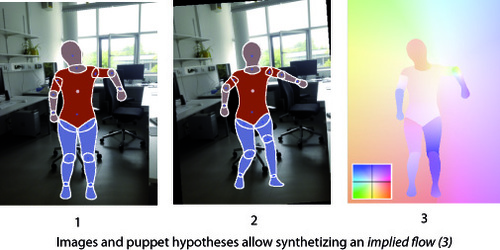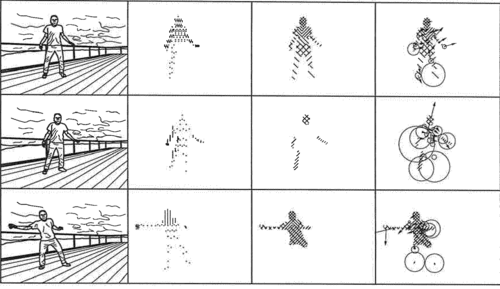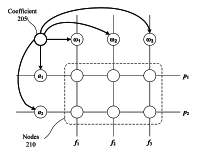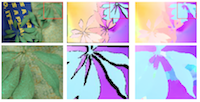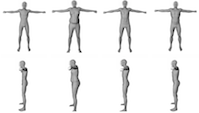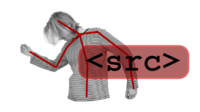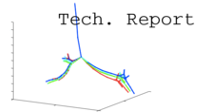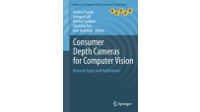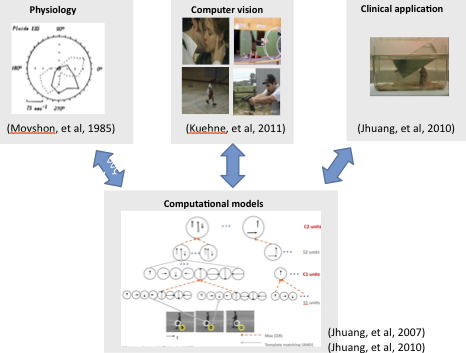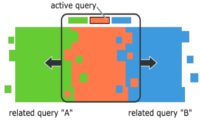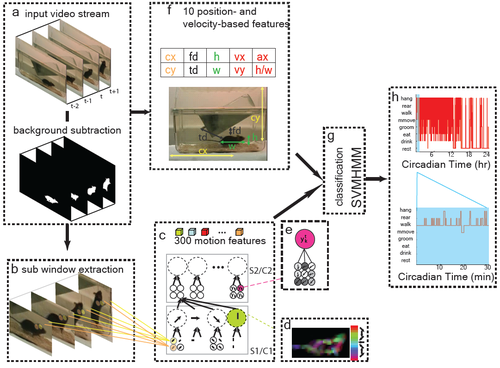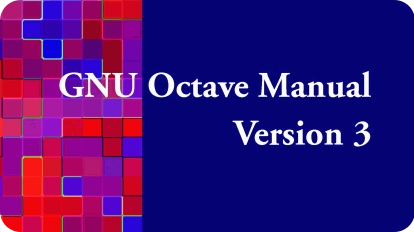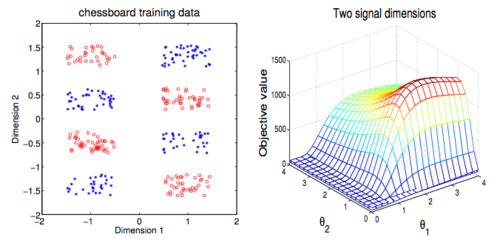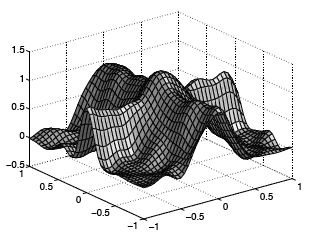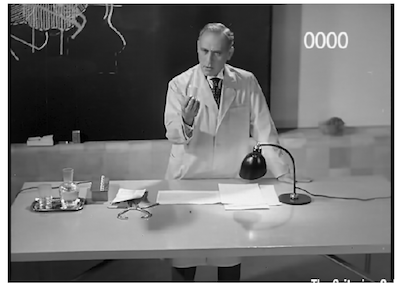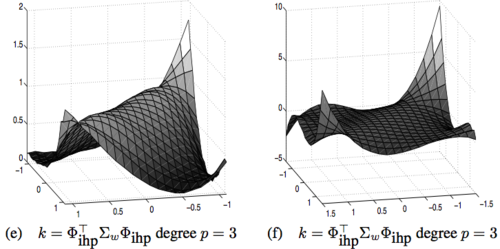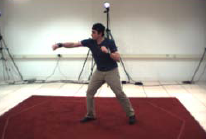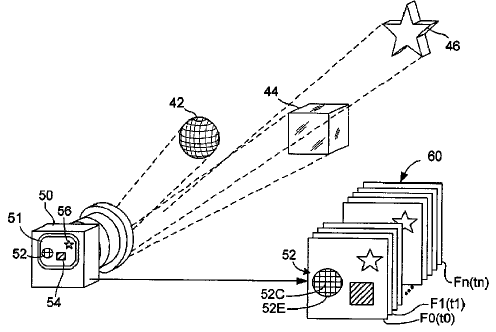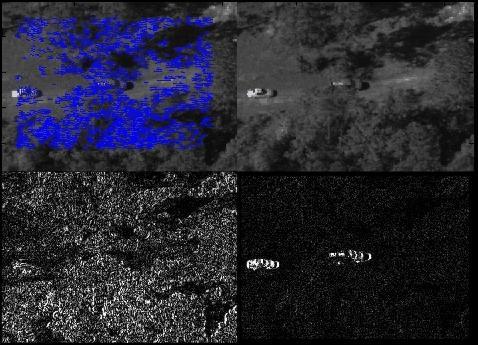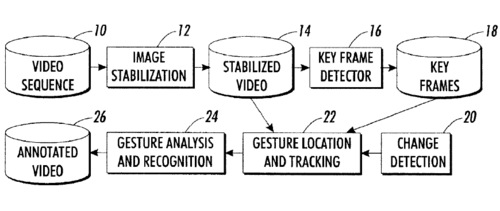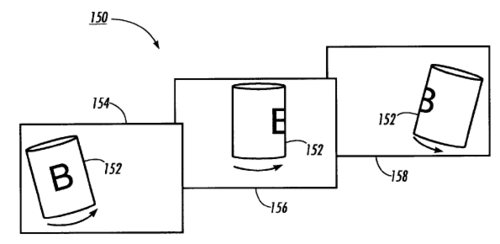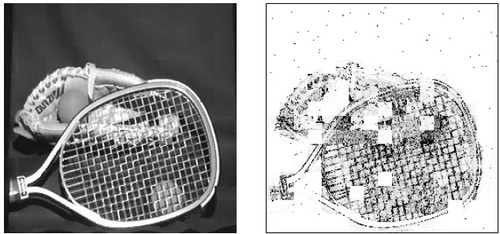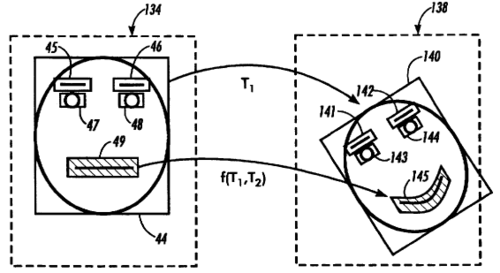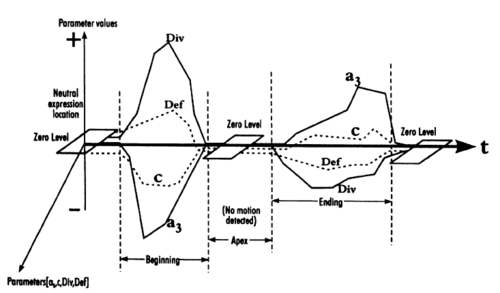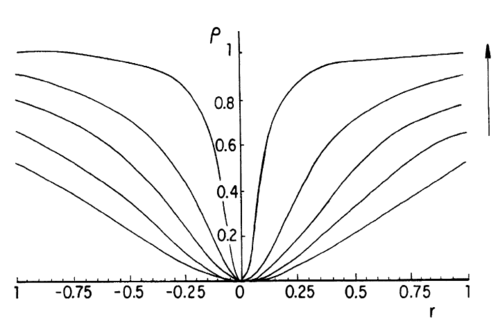2021
Skinned multi-infant linear body model
Hesse, N., Pujades, S., Romero, J., Black, M.
(US Patent 11,127,163, 2021), September 2021 (patent)
2020
Machine learning systems and methods of estimating body shape from images
Black, M., Rachlin, E., Heron, N., Loper, M., Weiss, A., Hu, K., Hinkle, T., Kristiansen, M.
(US Patent 10,679,046), June 2020 (patent)
Machine learning systems and methods for augmenting images
Black, M., Rachlin, E., Lee, E., Heron, N., Loper, M., Weiss, A., Smith, D.
(US Patent 10,529,137 B1), January 2020 (patent)
2019
Method for providing a three dimensional body model
Loper, M., Mahmood, N., Black, M.
September 2019, U.S.~Patent 10,417,818 (patent)
2018
Method and Apparatus for Estimating Body Shape
Black, M. J., Balan, A., Weiss, A., Sigal, L., Loper, M., St Clair, T.
June 2018, U.S.~Patent 10,002,460 (patent)
Co-Registration – Simultaneous Alignment and Modeling of Articulated 3D Shapes
Black, M., Hirshberg, D., Loper, M., Rachlin, E., Weiss, A.
February 2018, U.S.~Patent 9,898,848 (patent)
2017
Parameterized Model of 2D Articulated Human Shape
Black, M. J., Freifeld, O., Weiss, A., Loper, M., Guan, P.
September 2017, U.S.~Patent 9,761,060 (patent)
Crowdshaping Realistic 3D Avatars with Words
Streuber, S., Ramirez, M. Q., Black, M., Zuffi, S., O’Toole, A., Hill, M. Q., Hahn, C. A.
August 2017, Application PCT/EP2017/051954 (patent)
System and method for simulating realistic clothing
2016
Skinned multi-person linear model
Black, M.J., Loper, M., Mahmood, N., Pons-Moll, G., Romero, J.
December 2016, Application PCT/EP2016/064610 (patent)
2014
Advanced Structured Prediction
Nowozin, S., Gehler, P. V., Jancsary, J., Lampert, C. H.
Advanced Structured Prediction, pages: 432, Neural Information Processing Series, MIT Press, November 2014 (book)
Model transport: towards scalable transfer learning on manifolds - supplemental material
Freifeld, O., Hauberg, S., Black, M. J.
(9), April 2014 (techreport)
RoCKIn@Work in a Nutshell
Ahmad, A., Amigoni, A., Awaad, I., Berghofer, J., Bischoff, R., Bonarini, A., Dwiputra, R., Fontana, G., Hegger, F., Hochgeschwender, N., Iocchi, L., Kraetzschmar, G., Lima, P., Matteucci, M., Nardi, D., Schiaffonati, V., Schneider, S.
(FP7-ICT-601012 Revision 1.2), RoCKIn - Robot Competitions Kick Innovation in Cognitive Systems and Robotics, March 2014 (techreport)
RoCKIn@Home in a Nutshell
Ahmad, A., Amigoni, F., Awaad, I., Berghofer, J., Bischoff, R., Bonarini, A., Dwiputra, R., Fontana, G., Hegger, F., Hochgeschwender, N., Iocchi, L., Kraetzschmar, G., Lima, P., Matteucci, M., Nardi, D., Schneider, S.
(FP7-ICT-601012 Revision 0.8), RoCKIn - Robot Competitions Kick Innovation in Cognitive Systems and Robotics, March 2014 (techreport)
Human Pose Estimation from Video and Inertial Sensors
2013
Puppet Flow
D2.1.4 RoCKIn@Work - Innovation in Mobile Industrial Manipulation Competition Design, Rule Book, and Scenario Construction
Ahmad, A., Awaad, I., Amigoni, F., Berghofer, J., Bischoff, R., Bonarini, A., Dwiputra, R., Hegger, F., Hochgeschwender, N., Iocchi, L., Kraetzschmar, G., Lima, P., Matteucci, M., Nardi, D., Schneider, S.
(FP7-ICT-601012 Revision 0.7), RoCKIn - Robot Competitions Kick Innovation in Cognitive Systems and Robotics, sep 2013 (techreport)
D2.1.1 RoCKIn@Home - A Competition for Domestic Service Robots Competition Design, Rule Book, and Scenario Construction
Ahmad, A., Awaad, I., Amigoni, F., Berghofer, J., Bischoff, R., Bonarini, A., Dwiputra, R., Hegger, F., Hochgeschwender, N., Iocchi, L., Kraetzschmar, G., Lima, P., Matteucci, M., Nardi, D., Schneider, S.
(FP7-ICT-601012 Revision 0.7), RoCKIn - Robot Competitions Kick Innovation in Cognitive Systems and Robotics, sep 2013 (techreport)
Human Pose Calculation from Optical Flow Data
D1.1 Specification of General Features of Scenarios and Robots for Benchmarking Through Competitions
Ahmad, A., Awaad, I., Amigoni, F., Berghofer, J., Bischoff, R., Bonarini, A., Dwiputra, R., Fontana, G., Hegger, F., Hochgeschwender, N., Iocchi, L., Kraetzschmar, G., Lima, P., Matteucci, M., Nardi, D., Schiaffonati, V., Schneider, S.
(FP7-ICT-601012 Revision 1.0), RoCKIn - Robot Competitions Kick Innovation in Cognitive Systems and Robotics, July 2013 (techreport)
SocRob-MSL 2013 Team Description Paper for Middle Sized League
Messias, J., Ahmad, A., Reis, J., Serafim, M., Lima, P.
17th Annual RoboCup International Symposium 2013, July 2013 (techreport)
System and method for generating bilinear spatiotemporal basis models
Matthews, I. A. I. S. T. S. K. S. Y.
US Patent Application 13/425,369, March 2013 (patent)
A Quantitative Analysis of Current Practices in Optical Flow Estimation and the Principles Behind Them
Sun, D., Roth, S., Black, M. J.
(CS-10-03), Brown University, Department of Computer Science, January 2013 (techreport)
2012
Coregistration: Supplemental Material
Lie Bodies: A Manifold Representation of 3D Human Shape. Supplemental Material
MPI-Sintel Optical Flow Benchmark: Supplemental Material
HUMIM Software for Articulated Tracking
Soren Hauberg, Kim S. Pedersen
(01/2012), Department of Computer Science, University of Copenhagen, January 2012 (techreport)
A geometric framework for statistics on trees
Aasa Feragen, Mads Nielsen, Soren Hauberg, Pechin Lo, Marleen de Bruijne, Francois Lauze
(11/02), Department of Computer Science, University of Copenhagen, January 2012 (techreport)
Consumer Depth Cameras for Computer Vision - Research Topics and Applications
Fossati, A., Gall, J., Grabner, H., Ren, X., Konolige, K.
Advances in Computer Vision and Pattern Recognition, Springer, 2012 (book)
2011
ISocRob-MSL 2011 Team Description Paper for Middle Sized League
Messias, J., Ahmad, A., Reis, J., Sousa, J., Lima, P.
15th Annual RoboCup International Symposium 2011, July 2011 (techreport)
2010
ImageFlow: Streaming Image Search
Jampani, V., Ramos, G., Drucker, S.
MSR-TR-2010-148, Microsoft Research, Redmond, 2010 (techreport)
2009
ISocRob-MSL 2009 Team Description Paper for Middle Sized League
Lima, P., Santos, J., Estilita, J., Barbosa, M., Ahmad, A., Carreira, J.
13th Annual RoboCup International Symposium 2009, July 2009 (techreport)
Automatic recognition of rodent behavior: A tool for systematic phenotypic analysis
Serre, T.*, Jhuang, H*., Garrote, E., Poggio, T., Steele, A.
CBCL paper #283/MIT-CSAIL-TR #2009-052., MIT, 2009 (techreport)
2008
GNU Octave Manual Version 3
John W. Eaton, David Bateman, Soren Hauberg
Network Theory Ltd., October 2008 (book)
Incremental nonparametric Bayesian regression
Wood, F., Grollman, D. H., Heller, K. A., Jenkins, O. C., Black, M. J.
(CS-08-07), Brown University, Department of Computer Science, 2008 (techreport)
2007
Denoising archival films using a learned Bayesian model
Moldovan, T. M., Roth, S., Black, M. J.
(CS-07-03), Brown University, Department of Computer Science, 2007 (techreport)
2006
Implicit Wiener Series, Part II: Regularised estimation
HumanEva: Synchronized video and motion capture dataset for evaluation of articulated human motion
Sigal, L., Black, M. J.
(CS-06-08), Brown University, Department of Computer Science, 2006 (techreport)
2005
Visual motion analysis method for detecting arbitrary numbers of moving objects in image sequences
Jepson, A. D., Fleet, D. J., Black, M. J.
US Pat. 6,954,544, October 2005 (patent)
A Flow-Based Approach to Vehicle Detection and Background Mosaicking in Airborne Video
2003
Method and apparatus for generating a condensed version of a video sequence including desired affordances
Black, M. J., Ju, S., Minneman, S., Kimber, D.
US Pat. 6,560,281, May 2003 (patent)
Apparatus and method for identifying and tracking objects with view-based representations
Black, M. J., Jepson, A.
US Pat. 6,526,156, February 2003 (patent)
1996
Mixture Models for Image Representation
Jepson, A., Black, M.
PRECARN ARK Project Technical Report ARK96-PUB-54, March 1996 (techreport)
1995
Apparatus and method for tracking facial motion through a sequence of images
Black, M. J., Yacoob, Y.
US Pat. 5,802,220, December 1995 (patent)
Apparatus and method for recognizing facial expressions and facial gestures in a sequence of images
Black, M. J., Yacoob, Y.
US Pat. 5,774,591, December 1995 (patent)
Image segmentation using robust mixture models
Black, M. J., Jepson, A. D.
US Pat. 5,802,203, June 1995 (patent)

